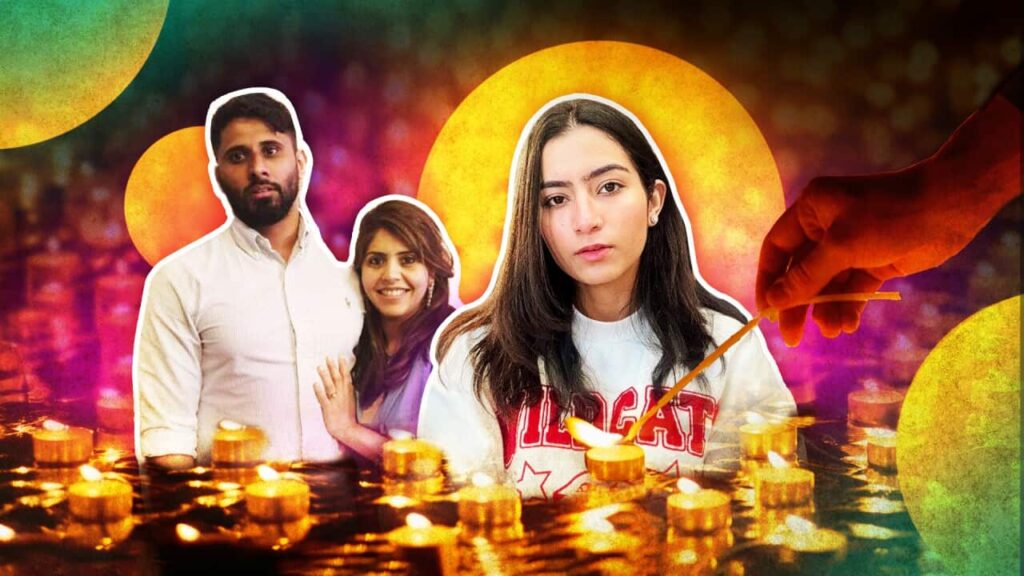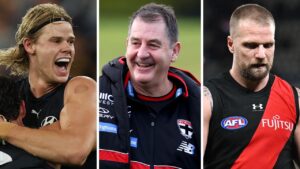
Sixteen years ago, Snohi Grewal arrived in Melbourne with a suitcase full of her belongings and a heart full of hope. As a student, she was wide-eyed and eager, certain that Australia would become her second home. Today, the 39-year-old mother is raising her two children in Melbourne’s Berwick, in a house filled with the sounds of Bollywood lullabies and backyard kabaddi.
For Grewal, who hails from Amritsar in northern India, Diwali has always been the thread connecting her past and present. “I’ve always loved celebrating Diwali here,” she tells SBS News, as diyas flicker in her living room, echoing those her mother used to light back home. “It’s how I pass on my culture to my kids.”
Often called the festival of lights, Diwali is a major celebration in Hindu, Sikh, Jain, and some Buddhist traditions, symbolizing the triumph of light over darkness, good over evil, and hope over despair. But as Grewal strings fairy lights across her porch ahead of this year’s festivities, the glow of Diwali feels somehow dimmer. A recent wave of anti-immigration protests in Australia — some targeting the Indian community — has left her feeling unsettled.
Anti-Immigration Sentiments Cast Shadows
The tension deepened last month when Liberal senator Jacinta Nampijinpa Price falsely claimed the government had geared its migration program in favor of Indian Australians because they tend to vote Labor. Her remarks drew swift backlash from across the political spectrum and from members of the Indian Australian community, who called them “un-Australian and divisive”. The fallout culminated in Price’s removal from Opposition leader Sussan Ley’s frontbench after a week-long standoff within the Coalition.
For many in the Indian diaspora, which now numbers more than 900,000, this Diwali feels different. Grewal says it’s no longer just a cultural or religious celebration. “It’s about showing that we’re part of this country, too,” she says. “We’ve built our lives here. We contribute. We belong.”
Diwali Endures Amid Shifting Sentiments
Grewal’s unease isn’t universal, but it’s not isolated either. Across the country, as families prepare for Diwali with joy and anticipation — spring-cleaning homes, buying new clothes, exchanging gifts, and planning feasts — there’s a quiet undercurrent. It’s present in WhatsApp chats and conversations over chai, where some members of the community are asking: how do you celebrate when your sense of belonging is under threat?
It’s a question that weighs on Arun Sharma, who arrived in Australia in the mid-1970s and has since seen Diwali evolve from small family gatherings into large-scale festivals supported by councils and embraced by multicultural communities. Sharma tells SBS News his connection to Diwali goes beyond lights and sweets: “It’s also about community, social cohesion, and belonging.”
Since arriving in Australia in the mid-1970s, Arun Sharma has watched the Indian diaspora grow from a quiet minority into a vibrant, visible part of the country’s multicultural identity.
Each year, Sharma, who is the chair of the Celebrate India Inc. group, organizes one of the country’s biggest Diwali celebrations at Melbourne’s Federation Square — an event that draws thousands, complete with music, markets, and cultural performances. But this year, Sharma admits, the atmosphere feels a little different. “The fact is, this sentiment is revisiting us after a couple of years now, when things were not very pleasant,” he says. “People are scared, and they are a bit worried about it, [asking] ‘What’s going to happen, where’s the future here?'”
Government and Community Response
Amid community concern, Prime Minister Anthony Albanese publicly reaffirmed the government’s support last month, calling Indian Australians a “vital part of modern Australia”. Speaking with the ABC’s RN Breakfast show, he said: “I just say to the Indian community: you’re valued, you’re welcome here, you make our country stronger by being here. And thank you for everything that you do to make Australia a better place.”
The prime minister’s words resonated with Sharma, but he believes they must also guide policy. “It’s time for them [the government] to reflect on their policies because overcrowding is one thing which we have to be careful about … I think they need to control that,” he says. “They need to balance it out with the genuine migrants here and those who are on the skills needed list, where they can provide beautiful services.”
A Newcomer’s Perspective
Proportionally, Australia’s overseas-born population is one of the largest in the world outside of the Gulf states and Singapore. According to the Australian Bureau of Statistics, as of June 2024, more than 8.6 million people living in Australia were born overseas — making up 31.5 percent of the population.
James O’Donnell, a demographer from the Australian National University, tells SBS News that sustained migration has brought cultural richness and economic strength — but it has also fueled rapid population growth, putting pressure on housing, infrastructure, and public sentiment. “After the COVID-19 pandemic, actual immigration levels did spike sharply. While this looks like it was a temporary spike, it did also produce a spike in the proportion of people who think that immigration is too high,” he says.
Indian-born migrants have driven much of the growth in immigration. The community has expanded from nearly 80,000 people in 1996 to more than 900,000 today, and is now the second-largest overseas-born group in Australia, after those born in the United Kingdom.
Among the new arrivals is 20-year-old Krishita Sharma, who is pursuing a bachelor’s degree in cybersecurity from Melbourne’s Swinburne University of Technology. She describes Diwali as a time of comfort and familiarity, evoking memories of her youth in India. But as she prepares for her second Australian Diwali, she says it comes with an unexpected dose of reality.
“I came here thinking this was a really multicultural place. And in many ways, it is,” Sharma tells SBS News. “But seeing the recent protests and the way people talk and think about migrants — it was shocking. I wasn’t prepared for that.”
Sharma says her colleagues and the people she shares accommodation with have helped her find her footing in Australia. This Diwali, she will be busy working but plans to set aside a few hours to share sweets and exchange gifts with her “borrowed family”. For a little while at least, it will feel like home, she says. “It’s not the same, of course. But it still reminds me who I am, and why I came here — to grow, to learn, to be part of something new.”
Challenges and Opportunities Ahead
According to O’Donnell, who co-authored the Scanlon Foundation’s Mapping Social Cohesion 2024 study, racism, prejudice, and discrimination are continuing problems in Australia. “More than one-in-three overseas-born Australians from non-English speaking backgrounds in the Mapping Social Cohesion 2024 survey reported experiencing discrimination in the prior 12 months on the basis of skin colour, ethnic origin or religion,” he says.
Sharma says her first experience of racism in Australia came just two months after arriving, while she was at a train station in north Melbourne. She says the incident left her scarred. “I was standing at the Donnybrook station and going about my business. It must have been around 9am when a man shouted at me, ‘Go back!'” she recalls. “I went home and cried so much; it was so traumatic.”
Preeti Nalavadi, an academic and PhD scholar at the University of Adelaide, who is passionate about community advocacy, says the current debate around immigration cannot be limited to intake caps or housing supply. “Migration defines Australia’s character,” she tells SBS News. “Sustainable migration isn’t just about getting the numbers right. It’s about offering migrants their dignity and valuing their partnership.”
Nalavadi points to the contributions of the Indian Australian community across a diverse range of industries, such as business, medicine, and academia, as well as civic life and cultural leadership. Yet, she says, many still feel unseen. “We work, contribute, belong and yet are treated as outsiders. Australia must do more to protect and respect those who call it home,” she says.
While some migrants are feeling the weight of recent events, many still experience Australia as a place of genuine opportunity and feel welcomed. And Diwali, for those in the Indian diaspora, remains a joyful and unifying celebration — a time to reflect on progress, pride, and shared identity. But even among the hopeful, there’s a growing awareness that inclusion must be actively nurtured, not passively assumed.
“Celebrating Diwali is not enough,” Arun Sharma says. “We need to make a little bit more effort from our side as well.” He suggests inviting neighbors from non-Indian backgrounds to participate in festivities to foster understanding and integration.
Meanwhile, as diyas flicker across Grewal’s windowsill, she reflects on what Diwali means this year — not just for her young family, but for herself. “We’re celebrating,” she says, as her children laugh and dance to Indian beats. It’s also her way of saying: “We’re here, we’re part of this place, and we matter.”







